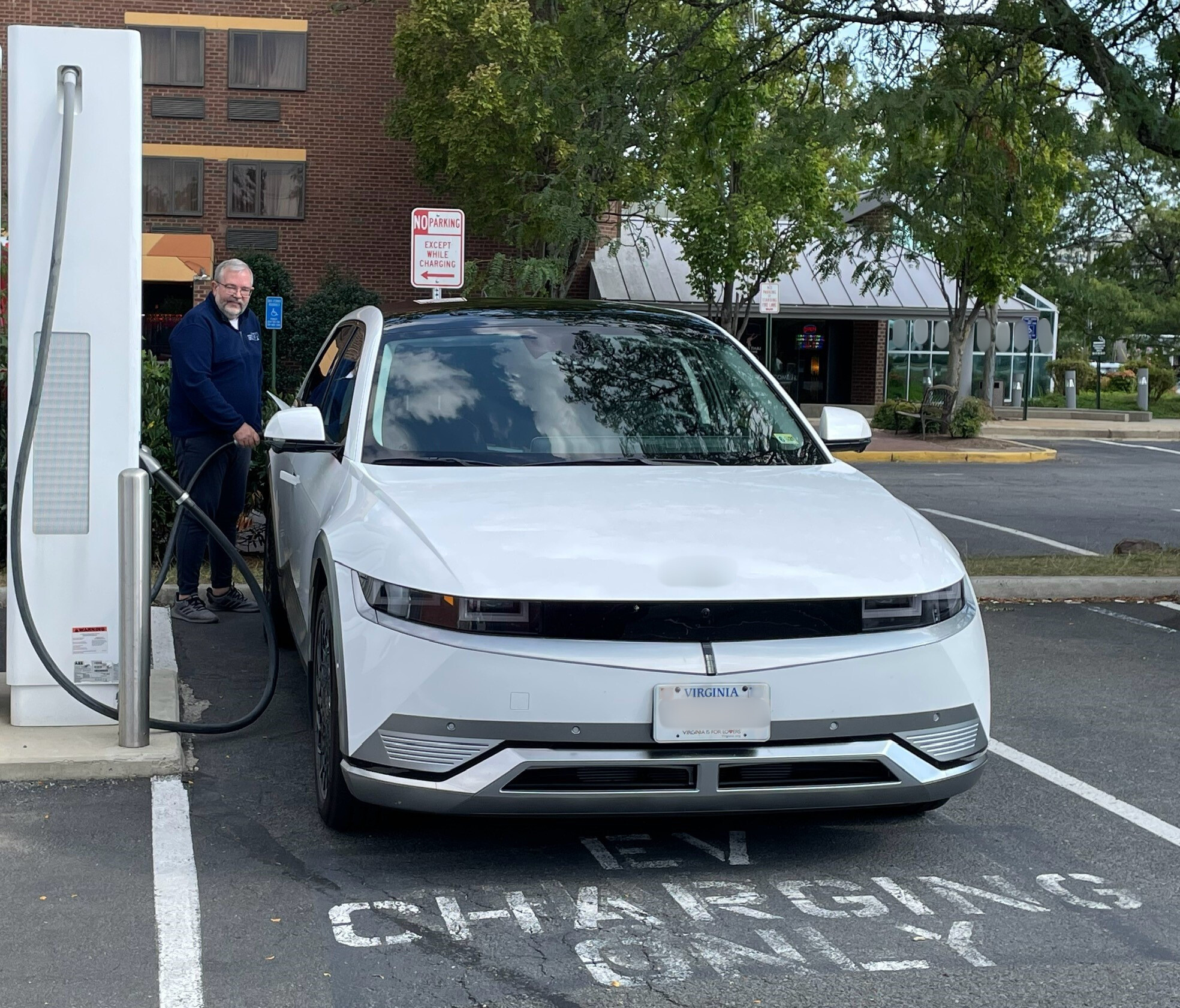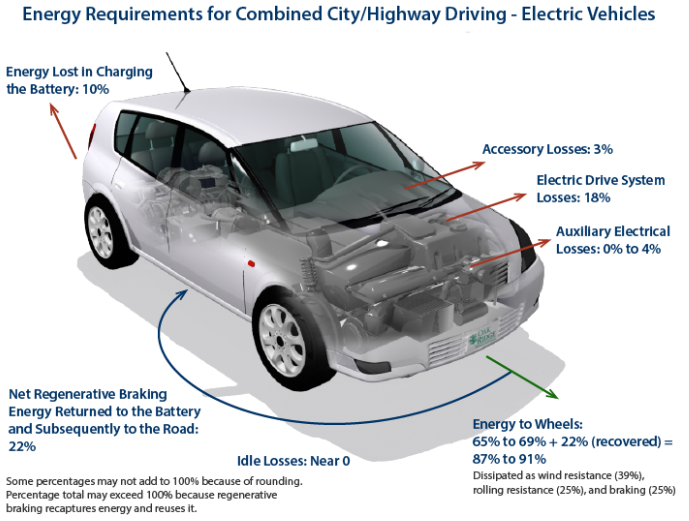Post written by Chris Miles, a lifelong Fairfax County resident
This past June, my wife and I reached our one-year anniversary of owning a battery powered Electric Vehicle (EV). And we’re loving it. 
Our car has no tail pipe and is emission free. That means no pollution. Some people argue that EVs just shift where the pollution is created since electricity used to charge the vehicle causes pollution but that is a common myth and is really just an argument of naysayers. The fact is that EVs have a smaller carbon footprint than internal combustion engine vehicles. The fact is that EVs are responsible for lower levels of greenhouse gases over their lives than any new gasoline car.
Saving on Fuel
We’ve driven our EV 7,500 miles. Depending on how we do the math, we’ve saved between $360 and $1,200 for those 7,500 miles. The manufacturer provided us two years of free fast charging at Electrify America (EA) kiosks. EA reports that we would have spent $1,201 to charge at their kiosks and that we’ve received 2,405 kWh in 56 free charging sessions. Google says the current average for gasoline is $3.137 per gallon and the U.S. Environmental Protection Agency says the average automobile fuel economy is 25.7 miles per gallon, so it’s easy to figure out for an average vehicle that we would have paid $915 for the gasoline necessary to drive 7,500 miles. At the least expensive rate we could get electricity for at home, $0.15 per kWh, it would have cost us only $360 to charge our EV at home. $360 is one-third the cost of gasoline to drive the same 7,500 miles.

Charging our EV
In another year, our free fast charging time will be up. To prepare for that we had a separate 40 ampere circuit extended to our garage by a licensed electrician and a 240-volt outlet installed there. Our EV can be charged overnight by a level-2 home charger, so we purchased one last December when they were on a deep discount sale. The charger price dropped from well over $500 each to less than $200 and we made the purchase. Most people charge their EV overnight and it’s ready every morning when they head to work. For the occasional long drive, our car’s onboard navigation system automatically finds and schedules the necessary charging stations for the trip. Home electricity is typically inexpensive, ours runs about $0.15 per kWh.
Fast charging means that our EV charges from 20 to 80% in around 20 minutes. We’ve read many people say that limiting battery charging to 80% extends the battery longevity and increases the battery performance. This made sense to me as an engineer, and 80% gives us 240 miles range versus 305 miles that our EV can go on a full charge. The 80% range is plenty for our day to day driving and there is a charging station less than one mile from our residence. And 20 minutes goes by fast. We’ve used the time to use the restroom in a nearby box store, to eat a breakfast or fast-food sandwich we picked up on the way to the charging station, or to just listen to some music.
Less Noise, No Exhaust
Oh, we’d be remiss to not mention the silence of driving in an EV. It’s super quiet, inside and out. It makes a pleasant “bing” sound when it’s backing up but other than that it's silent. It doesn’t add to road pollution — noise or exhaust emissions.
One final shot for the naysayers. EVs are the future. If we want our American manufacturing base to take an economic lead, then we need to stress EVs and the clean energy supply chains necessary for them. Our government is willing to do what it takes to motivate the private sector to build EVs that Americans want to purchase. Driving an electric vehicle ties in perfectly with installing solar panels, as we and many Americans have. And moving to clean energy is not only healthy for the environment, it's healthy for us as individuals.
Ready to give EVs a Try?
Visit our Electric Vehicles page for more information and resources to support your own EV journey. And be sure to check out local events happening for National Drive Electric Week (Sept. 27-Oct 6).

Chris Miles is a retired engineer who lives in Fairfax County with wife Susan. In recent years the Miles have made a variety of energy efficiency updates to their home like adding solar power, installing LED lighting, purchasing a high-efficiency water heater, and using an energy monitor, all of which have helped them save energy, reduce their carbon footprint, and make their home more comfortable. Read more about their efforts in their blog post from April 23, 2024.
Climate Matters is the blog of Fairfax County’s Office of Environmental and Energy Coordination, where we share stories, insights and information related to climate change and environmental sustainability. Posts are written by knowledgeable and passionate OEEC staff members and guest authors. To read all blog posts, visit Climate Matters.

